Related Research Articles

The Mayan languages form a language family spoken in Mesoamerica, both in the south of Mexico and northern Central America. Mayan languages are spoken by at least six million Maya people, primarily in Guatemala, Mexico, Belize, El Salvador and Honduras. In 1996, Guatemala formally recognized 21 Mayan languages by name, and Mexico recognizes eight within its territory.

Rigoberta Menchú Tum is a K'iche' Guatemalan human rights activist, feminist, and Nobel Peace Prize laureate. Menchú has dedicated her life to publicizing the rights of Guatemala's Indigenous peoples during and after the Guatemalan Civil War (1960–1996), and to promoting Indigenous rights internationally.

The Maya are an ethnolinguistic group of indigenous peoples of Mesoamerica. The ancient Maya civilization was formed by members of this group, and today's Maya are generally descended from people who lived within that historical region. Today they inhabit southern Mexico, Guatemala, Belize, El Salvador, Nicaragua, and Honduras. "Maya" is a modern collective term for the peoples of the region; however, the term was not historically used by the indigenous populations themselves. There was no common sense of identity or political unity among the distinct populations, societies and ethnic groups because they each had their own particular traditions, cultures and historical identity.

Lake Atitlán is a lake in the Guatemalan Highlands of the Sierra Madre mountain range. The lake is located in the Sololá Department of southwestern Guatemala. It is known as the deepest lake in Central America.

Maximón, also called San Simón, is a Maya deity and folk saint represented in various forms by the Maya peoples of several towns in the Guatemalan Highlands. Oral tradition of his creation and purpose in these communities is complex, diverse, and born of the ancient Maya traditions centuries ago.
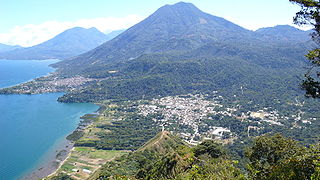
San Juan La Laguna is a municipality on the southwest shore of Lago de Atitlán, Sololá, Guatemala. It consists of the village named San Juan La Laguna and three smaller aldeas in the nearby mountain. The population is approximately 95% Tz'utujil. Agriculture is most important for the economy, with the service sector growing, especially as the number of tourists increase. The lowest elevation is the shore of Lago Atitlán at 1,562 metres (5,125 ft).

The Tzʼutujil are a Native American people, one of the 22 Maya ethnic groups that dwell in Guatemala. Together with the Xinca, Garífunas and the Ladinos, they make up the 25 ethnic groups in this relatively small country. Approximately 100,000 Tzʼutujil live in the area around Lake Atitlán. Their pre-Columbian capital, near Santiago Atitlán, was Chuitinamit. In pre-Columbian times, the Tzʼutujil nation was a part of the ancient Maya civilization.
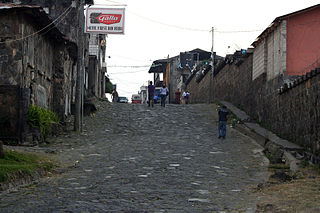
San Lucas Tolimán is a municipality in the Sololá department of Guatemala. The town of 17,000 people sits on the southeastern shore of Lago de Atitlán. The population is 90–95% Highland Maya. There is a population of about the same size living in the surrounding villages.

San Pedro La Laguna is a Guatemalan town on the southwest shore of Lake Atitlán. For centuries, San Pedro La Laguna has been inhabited by the Tz'utujil people, and in recent years it has also become a tourist destination for its Spanish language schools, nightlife, and proximity to the lake and volcanoes, particularly Volcán San Pedro, at whose base San Pedro La Laguna is located.

Santiago Atitlán is a municipality in the Sololá department of Guatemala.
Panabaj, located on the edge of Lake Atitlán in the western highlands of Guatemala, is a small village within the municipality of Santiago Atitlán, bordering the city of Santiago Atitlán proper, in the department of Sololá. Prior to the disaster of Hurricane Stan in which over 400 persons from Panabaj and nearby Tzanchaj were killed or left missing, the town's population had numbered over 3,000, though a census has not been taken since.
Tzʼutujil is a Mayan language spoken by the Tzʼutujil people in the region to the south of Lake Atitlán in Guatemala. Tzʼutujil is closely related to its larger neighbors, Kaqchikel and Kʼicheʼ. The 2002 census found 60,000 people speak Tzʼutujil as their mother tongue. The two Tzʼutujil dialects are Eastern and Western.
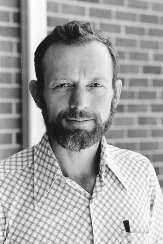
Stanley Francis Rother was an American Roman Catholic priest from Oklahoma who was murdered in Guatemala in 1981. He had worked as a missionary priest there since 1968. He held several parish assignments as a priest of the Archdiocese of Oklahoma City from 1963 to 1968 before being assigned to Guatemala.
Martín Prechtel is an American author and educator. From New Mexico, he traveled to Guatemala in 1970. There he moved into a Tz'utujil community near Lake Atitlán. He learned he Mayan language and studied with a shaman named Nicolas Chiviliu Tacaxoy.

Health in Guatemala is focused on many different systems of prevention and care. Guatemala's Constitution states that every citizen has the universal right to health care. However, this right has been hard to guarantee due to limited government resources and other problems regarding access. The health care system in place today developed out of the Civil War in Guatemala. The Civil War prevented social reforms from occurring, especially in the sector of health care.

Centro Educativo Pavarotti is a junior high school for children aged 12–16 located near Lake Atitlán in San Lucas Tolimán, Sololá Departement, Guatemala. The center is an initiative of the Rigoberta Menchú Foundation, which is an institution accredited for its contributions to the defense of human rights especially of indigenous peoples which impels educational programs, citizen participation, community development and combating impunity. The Utzilal Tijonikel program, which translated from Kaqchikel into English means “teaching to do the good thing”, offers also education complemented by a basic work orientation. The center serves approximately 150 Guatemalan children with 10 professors educating them. The majority of children attending this school live in poor circumstances, so that they receive financial support in order to attend this school. Without these benefits they would probably work on fields, like many of their parents do.
Mark V. Pauly is an American economist whose work focuses on healthcare management and business economics. He is currently the Bendheim Professor in the Department of Health Care Management at the Wharton School of the University of Pennsylvania. Pauly is a former commissioner on the Physician Payment Review Commission, and has been a consultant to the Congressional Budget Office, the Office of the Secretary of the U.S. Department of Health and Human Services, the American Enterprise Institute, and served on the Medicare Technical Advisory Panel. He is also the Co-Editor-in-Chief of the Springer journal International Journal of Health Care Finance and Economics, and was formerly the Robert D. Eilers Professor from 1984 to 1989.
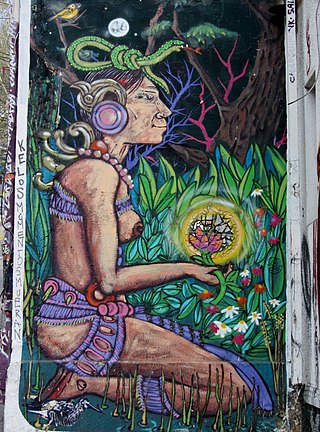
Paula Nicho Cumez is a Mayan-Guatemalan artist. Cumez is inspired by Mayan tradition and culture and focuses on expressing the context of native women’s experience in her artwork; additionally, Cumez was inspired by the Popol Vuh. Cumez is known for creating an artist community of women within the Tz’uthil Mayan artists, named "Kaqchikel Surrealist Painters.” Additionally, a short film was made about Paula Nicho Cumez’s background called Del Azul al Cielo.

María de la Concepción Ramírez Mendoza was a peace activist from Guatemala, whose portrait appears on the Guatemalan 25 centavo coin, known as the choca.
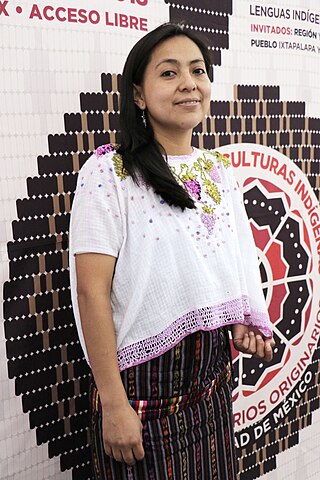
María Jacinta X. Riquiac is a Maya Kʼicheʼ anthropologist and indigenous rights activist from Guatemala.
References
- ↑ "Guatemala - Improving Rural Health Care | Penn : Making History". Makinghistory.upenn.edu. Retrieved 2011-12-17.
- ↑ "Penn Med Guatemala Health Initiative". Med.upenn.edu. 2007-02-09. Retrieved 2011-12-17.
- ↑ Archived 2012-04-06 at the Wayback Machine
- 1 2 3 "Guatemala". State.gov. 2011-07-27. Retrieved 2011-12-17.
- 1 2 "Attitudes of the Public". www.med.upenn.edu. Retrieved 7 August 2018.
- ↑ Nagata, Jason M.; Valeggia, Claudia R.; Smith, Nathaniel W.; Barg, Frances K.; Guidera, Mamie; Bream, Kent D. W. (January 2011). "Criticisms of chlorination: social determinants of drinking water beliefs and practices among the Tz'utujil Maya". Revista Panamericana de Salud Pública. 29 (1): 09–16. hdl:10665.2/9595. PMID 21390414.
- ↑ Nagata, Jason M.; Barg, Frances K.; Valeggia, Claudia R.; Bream, Kent D. W. (July 2011). "Coca-Colonization and Hybridization of Diets among the Tz'utujil Maya". Ecology of Food and Nutrition. 50 (4): 297–318. Bibcode:2011EcoFN..50..297N. doi:10.1080/03670244.2011.568911. PMID 21888598. S2CID 29683298.
- ↑ "biregional CH-10 till end (Pages 397-539).pdf" (PDF). Archived from the original (PDF) on 2012-02-27. Retrieved 2011-12-17.
- ↑ "Global Health Initiative: Guatemala Strategy". Ghi.gov. 2011-04-11. Retrieved 2011-12-17.[ dead link ]
- ↑ "International Medical Volunteers Association". Imva.org. Retrieved 2011-12-17.
- ↑ "Santiago Atitlan, Guatemala - a Human Rights Victory". Gslis.utexas.edu. Archived from the original on 2011-11-15. Retrieved 2011-12-17.
- 1 2 "Hospitalito Atitlán". Hospitalito Atitlán. Retrieved 2011-12-17.
- ↑ "Bream bio". Publichealth.med.upenn.edu. Archived from the original on 2012-04-26. Retrieved 2011-12-17.
- ↑ "Penn: Office of the University Provost | Guatemala". Upenn.edu. Retrieved 2011-12-17.
- ↑ "Lake Atitlán Guatemala". Atitlan.net. Retrieved 2011-12-17.
- 1 2 "Hospitalito Atitlán Blog » Blog Archive » Guatemalan Health Initiative - 2011". Blog.hospitalitoatitlan.org. 2011-08-08. Retrieved 2011-12-17.
- ↑ "Penn: Office of the University Provost | Guatemala". Upenn.edu. Retrieved 2011-12-17.
- ↑ "The Daily Pennsylvanian :: Penn assists Guatemalan 'Hospitalito'". Thedp.com. 2011-04-01. Retrieved 2011-12-17.